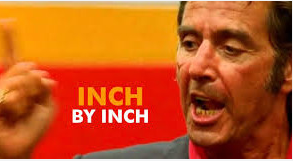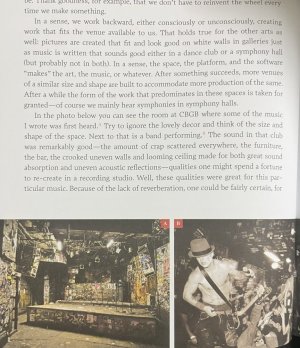You are using an out of date browser. It may not display this or other websites correctly.
You should upgrade or use an alternative browser.
You should upgrade or use an alternative browser.
Room-Speaker setup and the importance of 5mm !
- Thread starter arj
- Start date
I presume most discussions here are based for box loudspeakers which may not directly apply to OB speakers. Linkwitz lab in his conclusive statement mentions that "there is nothing much to achieve in loudspeakers placement by an inch" and we are discussing by mm here. Check out the link for the conclusions -
Conclusions
www.linkwitzlab.com
It’s valid for OB speakers too. It’s about reducing room interaction with the speakers.
I have used Linkwitz OB speakers for nearly 3 years. Minimising room interaction clearly works with OB speakers too.
It all comes down to 5 mm irrespective of whether its planar, OB, bass reflex, BLH
I have never owned FLH, so I don’t know
I have used Linkwitz OB speakers for nearly 3 years. Minimising room interaction clearly works with OB speakers too.
It all comes down to 5 mm irrespective of whether its planar, OB, bass reflex, BLH
I have never owned FLH, so I don’t know
reignofchaos
Well-Known Member
You can add acoustic suspension to that list as well. The ATC you helped me setup is exactly that.It’s valid for OB speakers too. It’s about reducing room interaction with the speakers.
I have used Linkwitz OB speakers for nearly 3 years. Minimising room interaction clearly works with OB speakers too.
It all comes down to 5 mm irrespective of whether its planar, OB, bass reflex, BLH
I have never owned FLH, so I don’t know
All speakers put out frequencies between 20 - 20000 hz. Depending on the enclosure design certain frequencies can be a bit better controlled. That’s about it. The room will still have a huge role to play. In OB, the rear wave needs to be controlled. That has its own challenges.
If anyone believes that use of a OB, cardoid or a CD horn will solve the room issues, the answer is no. You will still need to address the room. You still need to get the placement right where room node interaction is minimal. Room nodes will be present irrespective of the enclosure design.
Corner horns work differently and can be a good option for some. In corner horns, you just need to work on the angle to minimise room interaction. Similarly having drivers in the wall also work well because the wall becomes an infinite baffle.
If anyone believes that use of a OB, cardoid or a CD horn will solve the room issues, the answer is no. You will still need to address the room. You still need to get the placement right where room node interaction is minimal. Room nodes will be present irrespective of the enclosure design.
Corner horns work differently and can be a good option for some. In corner horns, you just need to work on the angle to minimise room interaction. Similarly having drivers in the wall also work well because the wall becomes an infinite baffle.
Last edited:
I agree with the rare waves have to be controlled in an OB. OB is not for small rooms. Unless you can have a minimum clearance of 1 meter at all boundaries - forget OB and look elsewhere.All speakers put out frequencies between 20 - 20000 hz. Depending on the enclosure design certain frequencies can be a bit better controlled. That’s about it. The room will still have a huge role to play. In OB, the rear wave needs to be controlled. That has its own challenges.
I always had a feeling with OB the room walls become the speaker enclosure to a large extent, given the uninterrupted radiation of the sound waves from the rear of the baffle. So understanding the room acoustics properties and how it interacts with the drivers is as important if not more?OB is not for small rooms
In OB the rear wave needs to be absorbed. Else it can create havoc. Ditto with panels too like Quad, Logan, Maggie.
With Maggie, a few use a ready made absorber which is placed just behind the speaker.
In OB the bass drops 12 db/octave. So the intensity of bass is reduced. But it still needs to be addressed. The higher frequencies can be absorbed or diffused. Even plants can be used behind OB speakers since they deflect the high frequencies
When I had the Logans, I worked on room placement and used plants behind the speakers
With Maggie, a few use a ready made absorber which is placed just behind the speaker.
In OB the bass drops 12 db/octave. So the intensity of bass is reduced. But it still needs to be addressed. The higher frequencies can be absorbed or diffused. Even plants can be used behind OB speakers since they deflect the high frequencies
When I had the Logans, I worked on room placement and used plants behind the speakers
Last edited:
The rate wave needs to be diffused and not absorbed for an OB and should not be reflected. If you can achieve a >6msec delay between the rare reflected sound and if the rare wave is also full range upto 20khz, then it becomes room independent and then room does not contribute to the sound stage and the reflected waves gets masked by the direct sound.
If you can place your OB woofer to achieve >6msec delay from your direct radiation then you can leave them as it is. In a smallish room that's a difficult placement IME. Even after that the 6db drop at low end needs to be addressed with some EQ as at low frequency the woofer Q will drop. Neither there is any Q support from the box. The only larger advantage is the OB woofer will require relatively less amplifier power to drive them at the same SPL. Putting a relative high Qts woofer of around 1 will be advantages in an OB setup.
I presume most discussions here are based for box loudspeakers which may not directly apply to OB speakers. Linkwitz lab in his conclusive statement mentions that "there is nothing much to achieve in loudspeakers placement by an inch" and we are discussing by mm here. Check out the link for the conclusions -
Conclusions
www.linkwitzlab.com
i think he is talking about placement by calculations..its true you cannot calculate the position you have to place it by listening.
Speaker placement to the inch based on some room acoustic calculation is nonsense.
It's pretty easy to create live sound at home, just buy a PA system and add those 18 inch woofers..Excerpt from “How music works” by David Byrne
Live Indian classical music and folk music evolved and were performed for audiences in the open or in semi open areas like temples.
In the west the cold climate dictated indoor performances in churches, cathedrals and opera stages and evolved accordingly.
Amplification became common after the 1900s. Before that it all depended on how loud the instruments were and how loud the singer could sing to overcome the crowd noises. Groups of musicians and orchestra could collectively make louder sounds than crowd noise.
Amplified music sounds different in the open than in auditorium and theatres
“the Live experience” varies according to context.
In the west the cold climate dictated indoor performances in churches, cathedrals and opera stages and evolved accordingly.
Amplification became common after the 1900s. Before that it all depended on how loud the instruments were and how loud the singer could sing to overcome the crowd noises. Groups of musicians and orchestra could collectively make louder sounds than crowd noise.
Amplified music sounds different in the open than in auditorium and theatres
“the Live experience” varies according to context.
sachinchavan 15865
Well-Known Member
A small correction:Live Indian classical music and folk music evolved and were performed for audiences in the open or in semi open areas like temples.
While Carnatic classical was traditionally performed in temples, Hindustani classical (barring Dhrupad) was largely performed in Darbars (king’s/nawab’s courts) and light classical in kothis - both well-furnished indoors.
Darbars were held in open halls?A small correction:
While Carnatic classical was traditionally performed in temples, Hindustani classical (barring Dhrupad) was largely performed in Darbars (king’s/nawab’s courts) and light classical in kothis - both well-furnished indoors.
Wharfedale Linton Heritage Speakers in Walnut finish at a Special Offer Price. BUY now before the price increase.
Similar threads
- Replies
- 0
- Views
- 1K
- Replies
- 6
- Views
- 1K



